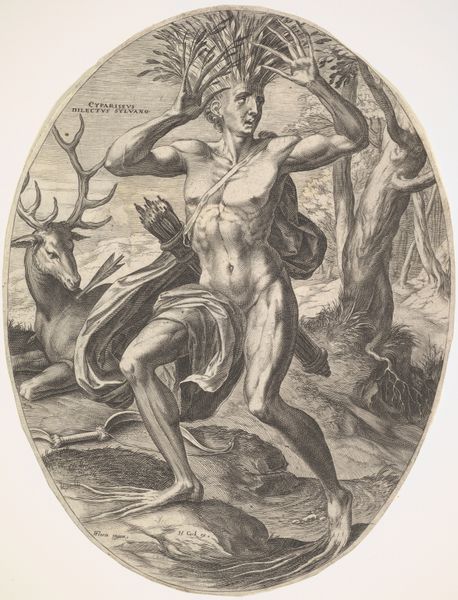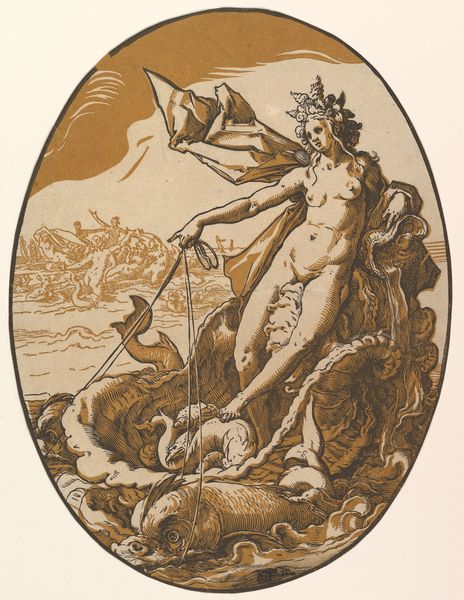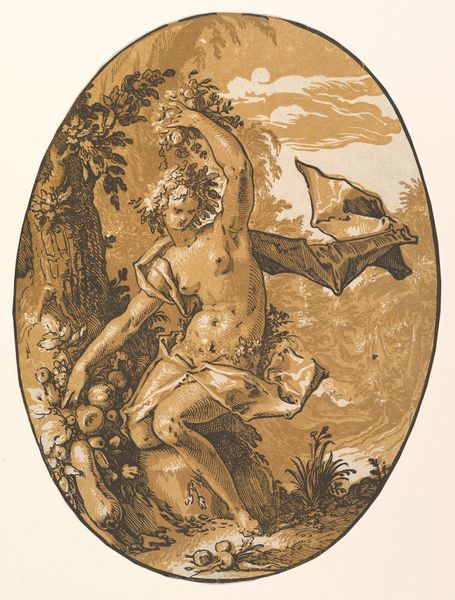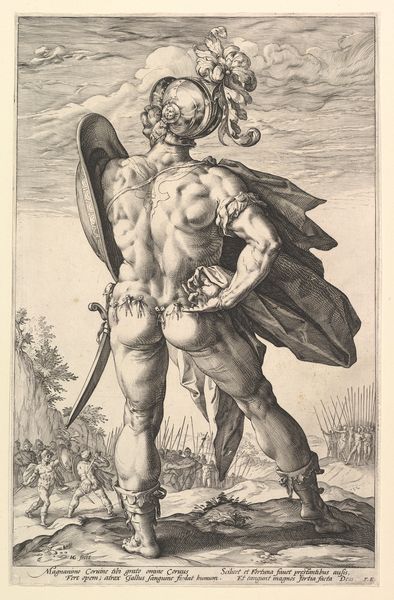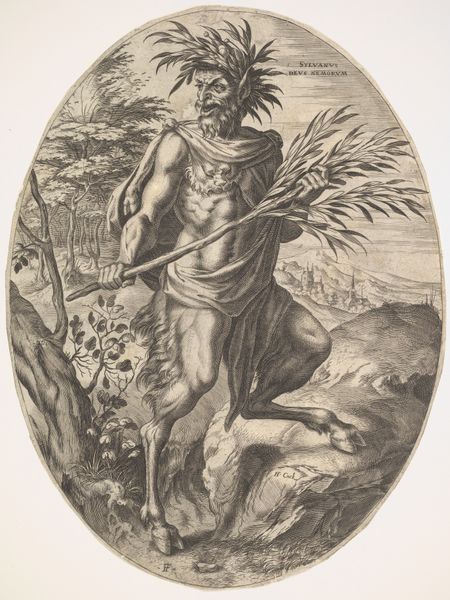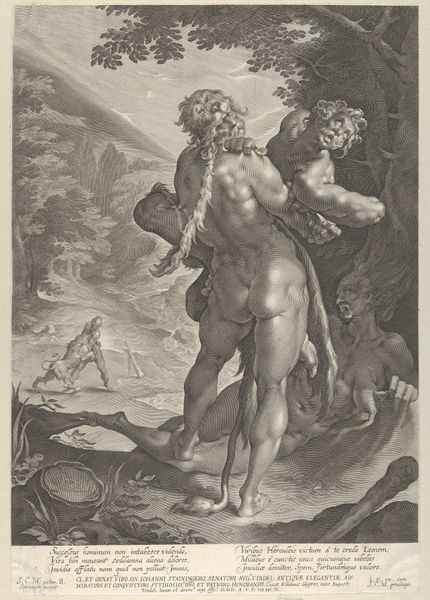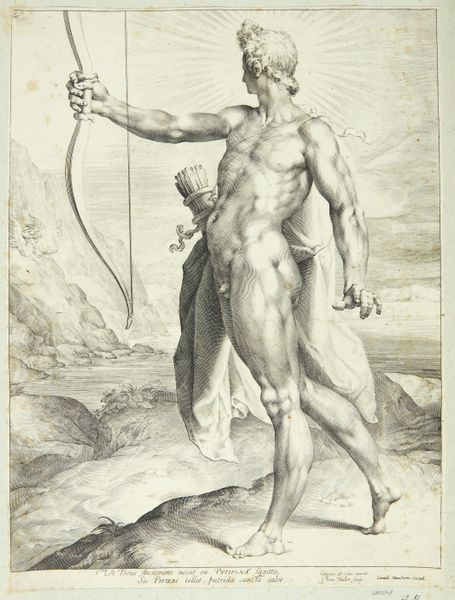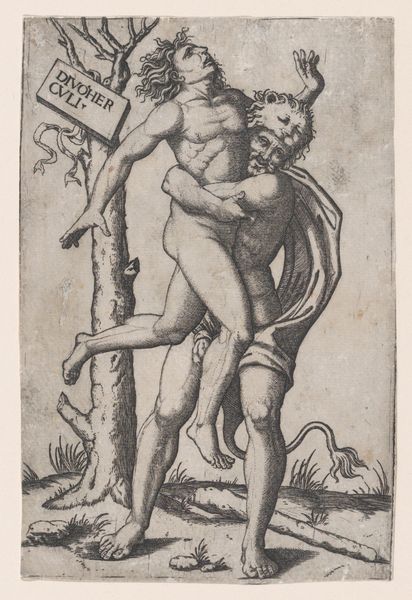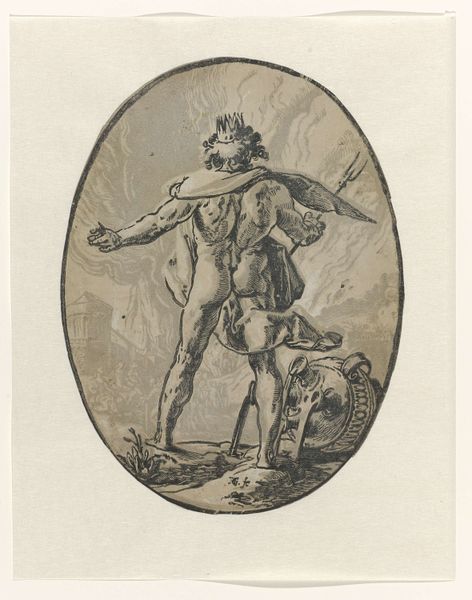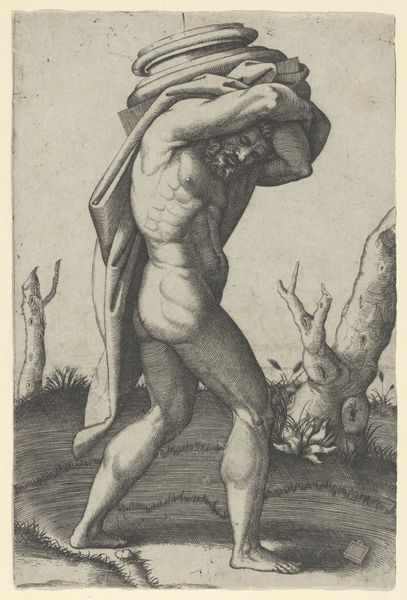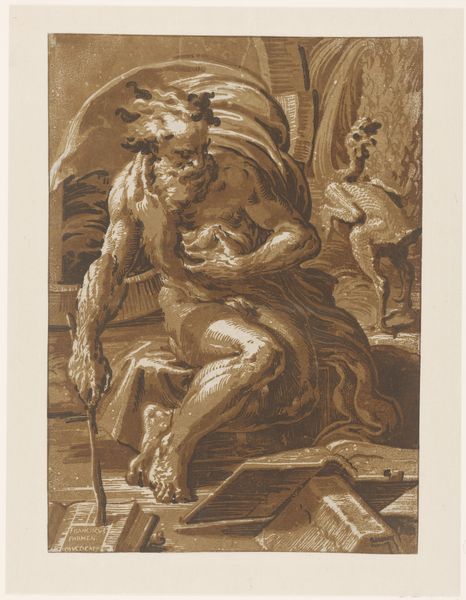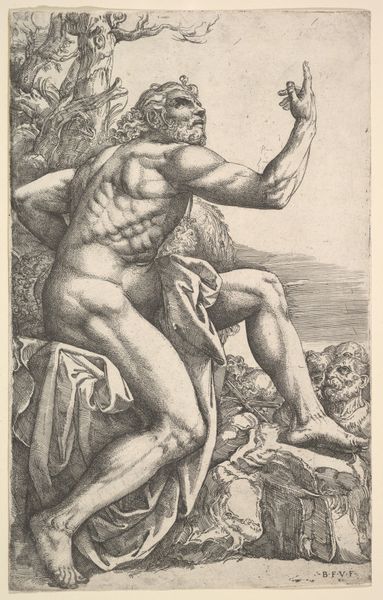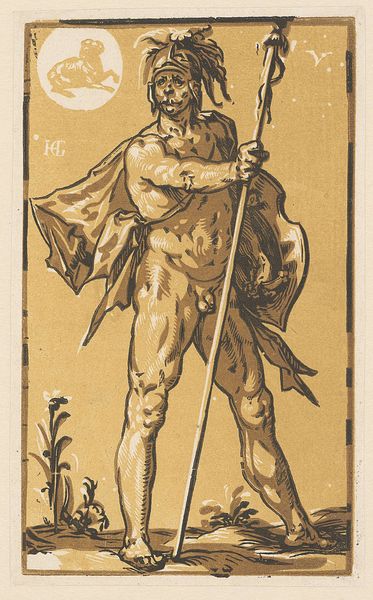
print, engraving
# print
#
caricature
#
mannerism
#
figuration
#
history-painting
#
engraving
Dimensions: 34.5 x 26 cm
Copyright: Public domain
Editor: So here we have "Pluto," an engraving by Hendrick Goltzius from 1594. I am really drawn to the drama of the piece. You’ve got this powerful, almost theatrical figure in the foreground against a backdrop of what looks like utter chaos. It's intense! What’s your take on this, and what cultural context informs it? Curator: Well, seeing as Goltzius was a master of Mannerism, we have to consider the art world's audience at that moment in time and how artists and intellectuals actively distanced themselves from the norms established during the Renaissance. We must consider how artists turned toward extreme elegance, artificiality, and stylized exaggeration; so what might be the social, political implications? And how might the museum play into this reception, if at all? Editor: Hmm, that’s interesting… You mentioned artificiality, and I agree; there’s something staged about it. Do you think that’s maybe because printmaking catered to the sensibilities of the elites at court? Is there a certain...performance happening? Curator: Precisely. Goltzius’s prints like this one became valuable commodities. They circulated in a market driven by discerning collectors and influential patrons. Consider the symbolism as well – the spear, the shield, and crown evoke status, even tyranny. Editor: Okay, I get it. It's like Goltzius is making a statement about the ruling class itself through this depiction of Pluto. Curator: Absolutely. He’s not just depicting a mythological figure; he's commenting on power structures and the perceived excesses of authority figures. These are very political decisions manifested in image. Editor: Wow. It’s amazing how much can be read into what seems like just a scene from mythology! It makes you wonder what kind of visual arguments artists will be making now that social media plays into viewership. Curator: Indeed. Understanding this interplay is crucial to how we interpret historical and contemporary art in galleries, online, or beyond.
Comments
No comments
Be the first to comment and join the conversation on the ultimate creative platform.
